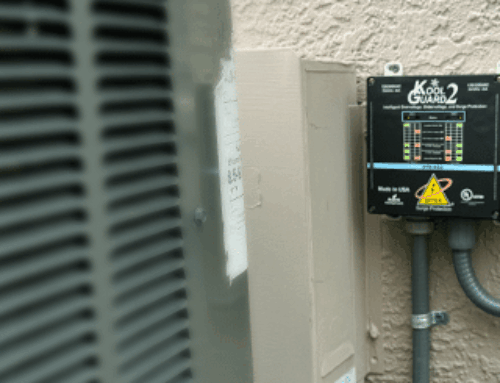As some cities record their hottest temperatures ever and the nation grapples with aging infrastructure, the frequency of brownouts is occurring at a rapid pace. The fallout from such brownouts can be as minimal as dimming lightbulbs or as extreme as loss of refrigeration for life-saving medication. But what can be done to prevent the worst? And why does it matter now? What even is a brownout? We’re here to answer these questions and more.
What is a Brownout?
An electrical brownout occurs when a facility’s power system experiences an intentional or unintentional drop in voltage. In an intentional brownout, the utility controlling the power output reduces the flow of electricity in order to prevent a wider blackout. Unintentional brownouts are less common, but can occur as a result of damage or malfunction within the power gird. During a brownout, electricity is still flowing, albeit at lower voltage levels than usual, unlike a blackout wherein there is a complete loss of electricity. You can typically spot a brownout – and the term’s namesake – when you see lights dim due to the drop in voltage.
Brownouts are known to cause significant damage to in-house electronics. Appliances with electric motors, such as computers and refrigerators, are at immediate risk during a brownout. When voltage declines, the appliance’s motor draws more power, thus causing it to overheat. Components in sensitive electronics are also easily damaged when under- or over-powered, and long-term brownouts can even cause premature wear in non-electronic devices; but perhaps the most damaging effects of a brownout occur once it is over. When full voltage is restored to a facility post-brownout, the resulting fluctuation in voltage can lead to a damaging power surge. These damaging surges have the potential to destroy entire systems if no protection is in place.
Why You Should Prepare for Brownouts Now
Brownouts can occur unexpectedly at any time and can last anywhere from minutes to hours. And while brownouts are nothing new, recent developments have only increased their likelihood. In May of 2022, the North American Electric Reliability Corporation (NERC) released a report warning that several parts of North America are at elevated or high risk of energy shortfalls this summer. NERC attributed these shortages to higher than normal temperatures and increased drought conditions.
Not only do drought conditions reduce the reliability of hydroelectric and thermal power sources, but warmer temperatures also drive up the demand for power. As people struggle to stay cool, they turn to power hungry devices such as air conditioning units and refrigeration to meet their needs. This creates an imbalance in power supply and demand. When the electrical demand meets or exceeds the utility’s production capacity, the utility will limit power flow in an effort to curb demand and return the supply to normal, thus causing an intentional brownout.
Power reliability is also threatened by an aging electrical grid. Much of the current system is decades old and is located outdoors where it is susceptible to the full range of harsh environmental conditions. Add to this recent lifestyle trends, such as the current push for electric vehicles and an increase in the number of people working remotely, that place substantial new strains on the nation’s electric supply. The result is an aging power grid wherein millions of users are constantly switching power on and off and driving up demand, creating lots of electrical power disruptions, brownouts, power surges, and spikes.
How to Prepare for a Brownout
The writing is on the wall for those relying on consistent power – expect a brownout to occur sooner rather than later. The good news is there are things you can do to prepare your home or business from brownouts and the damage caused by them. Start by investing in an uninterruptible power supply (UPS). An UPS effectively delivers battery backup power to connected critical devices during a brownout. While a UPS will not provide power for extended periods of time, it will give you enough time to properly power down your devices and prevent costly damages.
Given that there is no way of knowing how long a brownout can last, the most reliable source of backup power lies with a power generator. When it comes to keeping your family comfortable at home or maintaining normal business operations, you can count on a backup generator to mitigate the negative effects of an unexpected brownout. Note that generators should be equipped with an automatic transfer switch (ATS) device to facilitate the smooth transfer of power from the utility to the generator. Without an ATS, the activation of a generator would need to be completed manually, often not an option for businesses, and could cause unintentional energization of surrounding areas.
Lastly, surge protection devices offer protection to electronic devices during those all-too-common, post-brownout power spikes. Surge protection is an investment that can prevent costly repairs, device replacement, and complete system replacement. Furthermore, businesses can suffer from lost revenue, even fines, if their critical HVAC, surveillance, or fire alarm systems are inoperable due to a power surge spawned by a brownout. ATS devices should also be equipped with surge protection in order to ensure continuous backup power. Outside of brownouts, surge protection also protects against transient surges caused by everything from lightning to smaller, everyday surges.
Choosing the Right Provider
DITEK offers a variety of uninterruptible power supplies and surge protection devices – ideal for both commercial and residential installations. Designed using the latest in surge protection technology for maximum performance and protection, solutions are available in a wide range of voltage configuration and protection modes to meet all of your project specification needs. All of DITEK’s products are made in the USA and backed by comprehensive warranties of up to 10-years, making DITEK surge protection the ultimate tool against unexpected brownouts. Contact us today!





